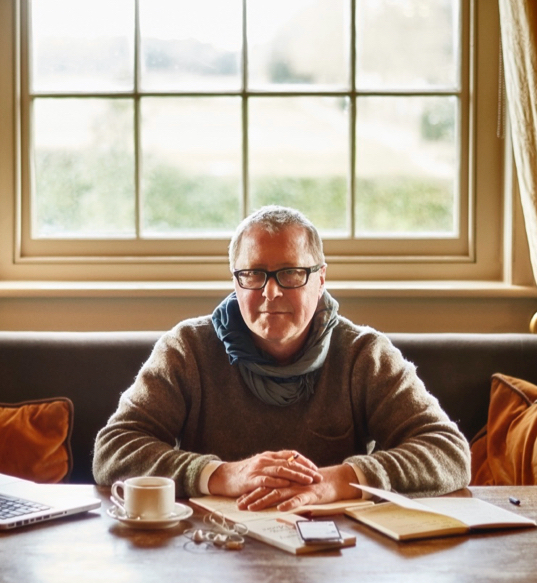Beauty expresses the idea that we can seek the good and manifest it in all that we create in this world, says Alan Moore, author of Do Build. Discover how ‘beautiful’ leadership can be a frame for business
If you are a leader, you are a builder. And if you are building something, make sure you build well. Here are some reflections on how to become a ‘beautiful’ leader by instilling certain kinds of values, a positive mindset and good working practices.
What world do you want to make?
What gets you out of bed on a Monday morning when it is pouring with rain? When it hurts like hell, what keeps you going? What is the deep well you draw from that fuels your best creativity? ‘World-making’ is the reason, the fire that stokes the furnace. This is the north star on the path that takes you home to your true self, serving as a beacon to others. It is about being true to yourself. It’s not about money or reward, nor is it a theoretical exercise. Companies that care about the world they make create bonds and relationships with people who share those values and worldviews.
The coffee buyer, Falcon Coffees, wishes ‘to change the way coffee is traded for good’. This is no mean feat, as coffee is traded as a commodity. As a result, the 26 million people who make it their business to grow the world’s coffee, meeting people’s insatiable thirst for the stuff, are also often treated as commodities. Falcon Coffees challenges that exploitative way of working by building supply chains with rural farming communities for mutual profit and positive social impact.
The Japanese martial artist, Morihei Ueshiba, who created Aikido in the early 20th century, did so with the aim of protecting all life that exists on this planet. The computer mouse inventor, Doug Engelbart, who pioneered hypertext and video conferencing, wanted to help people to share knowledge, so they could collectively solve some of the world’s most pressing problems. Consider your business’ mission. Ask yourself, what world do you want to make? How do you wish to live?
Generosity as leadership
Generosity and business do not always go hand in hand. However, Guido Bernardinelli, CEO of La Marzocco, founded in 1927 and still privately owned, has spoken of its merits. When asked how his company has managed to survive, thrive and innovate, he has simply replied: ‘total devotion to our people’. La Marzocco builds some of the best handmade espresso coffee machines in the world.
Approaching leadership with a sense of generosity taps into the greatest human qualities. In business, as in life, you should always strive to give back more than you take. Generosity is nurturing for people. Creating the right conditions for your staff to thrive is key to being the best and most effective leader that you can be.
The Icelandic artist, Olafur Eliasson, opened my eyes to the possibility of generosity, by feeding around 100 of his staff every day with a freshly cooked vegetarian meal. Eliasson says: ‘Cooking is caring for others. It is a gesture of generosity.’ He states that eating together brings a connection between human beings, food and the sun.
Generosity begins with an invitation, and in capable hands brings a rich flow of information, so a deeper understanding of the world evolves. Eliasson has teams with specific functions, working on a range of projects. He wants them to feel that they are interwoven; he does so by showing he truly cares. As the South Korean Buddhist nun and cook, Jeong Kwan, says, with food what we are really eating is the ‘mindset of sharing’. This is generosity. In your own work, consider asking the question: How can you show generosity as a leader in a way that will feed the cultural fabric of your business?
The empathetic leader
A leader’s ability to be truly empathetic shows strength, not vulnerability. This is a nurturing quality. It allows one to see far deeper into the truth of people and to find their potential. If you show empathy, people will then reveal their potential to you. This courageous act means you have empowered and strengthened your organisation and its potential. Empathy is an investment that will repay you.
Ethical decision-making
There is no shortcut to creating worthwhile outcomes. I have seen too many decisions made for short-term gain, where constant growth in the service of profit becomes a sickness, which can be terminal. Look at a situation when you feel deadlines pressing so hard that there is no time or air to breathe. How do you as a leader deal with intense pressure, managing the expectations of investors, board members and those within the team?
Imagine a company at a board meeting. The firm is under pressure. Decisions must be made to counter its ailing financial performance. A number of board members have come up with a ruse to fabricate evidence, enabling the company to sell its products falsely. It’s a risky plan because if the deception were to be discovered, the consequences could be disastrous: a fall in market valuation; a loss of trust in the brand, which would impact sales; fatal damage to the leadership team; and the high costs of legal action.
This could be the legacy of making such a choice. But what if someone asks the question: ‘Is that the most ethical decision we can make?’ It’s a simple question but one that is packed with important frames for business decision-making: how to stand in truth, how to be guided instinctively to a better outcome, how to discover a path based on values, and how to retain the concept of legacy building. If you are a disruptive leader, this question encourages you to resist the urge to break things, and instead use the time to build. There is a saying that what happens in vagueness stays in vagueness. This question helps to illuminate an ambiguous world and to navigate to a better destination.
Beautiful decision-making
To build a business the world needs, we have to be prepared to create products or services that are both beautiful and profitable. The question, ‘is that the most beautiful decision we can make?’ asks you to be fully open with your mindset and to embrace challenges with optimism. It steers the imagination to find an alternative path, informing the right action. It provides and asks for crystal-clear clarity.
Consider asking, ‘is that the most beautiful decision we can make?’ within your own organisation. It does not have to be for a matter of high strategic importance. It could be about an everyday issue. Reflect on a situation that has happened or one that is upcoming, where decisions made will shape your future. This simple question reframes what a good outcome could be. Those who ask a more beautiful question could find a more beautiful answer.
This is an edited excerpt from Do Build: How to make and lead a business the world needs by Alan Moore, published by Do Books.
BGA members can receive a 25% discount on a copy of Do Build. Please visit the BGA Book Club for details.
Discover more about making and leading a business the world needs – attend a webinar with the author of Do Build on 5 July 2022, 12:00 – 13:00 BST (UTC+01:00).
Alan Moore has collaborated with companies that include Microsoft, Coca-Cola and PayPal, and has taught at MIT Sloan School of Management and INSEAD. He is the author of four books on creativity and business transformation, including Do Design (Do Books, 2016).
Headline image credit: Yannis Papanastasopoulos on Unsplash








